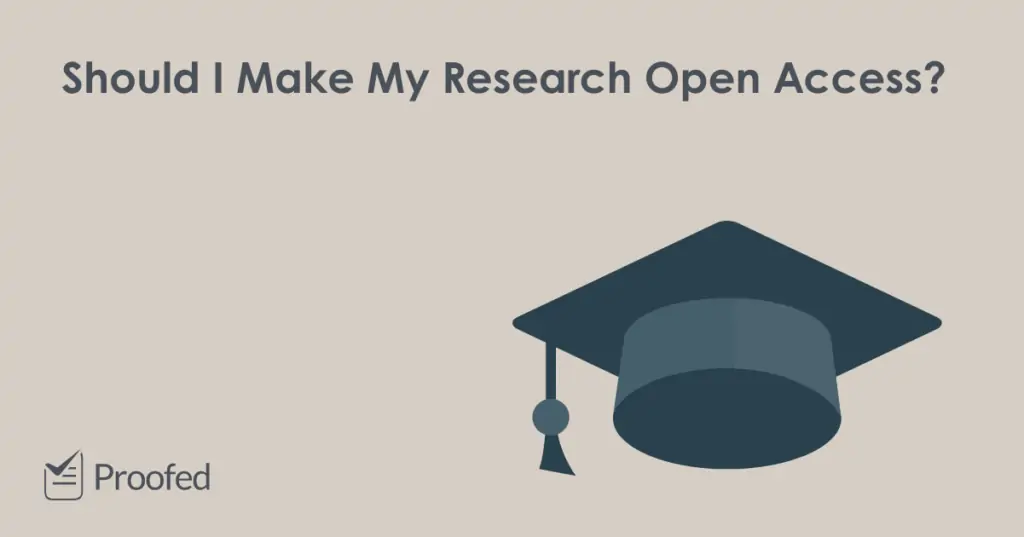Researchers and academics have always sought to publish their work in journals. But now they’re faced with an extra decision: do I also want to make my research open access? In this post, then, we’ll look at what open access research is, plus a few things you may want to think about when deciding whether to make your work openly available.
What Is Open Access Research?
Open access refers to making research online for free, permanently. This contrasts with traditional publishing, which requires researchers or institutions to subscribe to a journal to gain access.
There are several advantages to publishing open access research, including:
- It makes your work easier to find and can help ideas spread more quickly.
- It helps you demonstrate the value of your work to more people.
- Researchers and students around the world can engage with your work.
However, some researchers still prefer to submit their work to traditional journals. It is ultimately a matter of preference, your priorities, and what you want to achieve, as we’ll explain below.
5 Factors to Consider When Submitting to a Journal
In the rest of this post, we’ll look at what to consider when deciding whether to make your research open access. The top five factors are as follows:
1. Visibility
The number one reason to publish in an open-access journal is to maximise visibility. Simply put, if your work is open access it will be available to more people. And this means more people – both professional academics and the public – will read what you’ve published. Thus, if you want to reach the largest audience possible, open access may be your best option.
2. Prestige
Most of the biggest, most well-known journals work on a subscription basis. And these ‘brand name’ journals often score highest in terms of their impact factor. As such, if you have a high enough profile to get published in one of these prestigious journals, they’re often your best choice.
However, several open-access journals score highly for impact, too. And as time passes, the prestige gap between subscription and open-access journals is likely to narrow further, so this is less of an issue than it used to be.
Find this useful?
Subscribe to our newsletter and get writing tips from our editors straight to your inbox.
3. Costs
Most journals charge a fee at submission to cover editorial and review costs. But there are also additional costs post acceptance.
For a traditional journal, this is usually worked out per page. But open access journals may charge a one-off ‘processing’ fee instead. Depending on the journal, these fees can vary from under $100 to thousands of dollars. It is thus important to look at this cost – and whether your institution will cover it – when deciding whether to submit work to an open-access journal.
4. Timescale
The peer-review and publication processes can be long winded. And this can be frustrating for authors. The time it takes to get published in a traditional journal can depend on several things, including:
- Backlogs of articles scheduled to be published due to space limitations.
- The need to collate individual articles into issues.
- The time it takes to print and distribute journal issues.
Many open-access journals offer a significantly streamlined process, though, as they’re usually online only and thus not subject to the same restrictions. And if you’re interested in getting your work published as soon as possible, open access is usually your best option.
5. Types of Open Access: Green or Gold?
Still not sure whether to make your research open access or stick to a traditional subscription-based journal? You could try to find a compromise between the two with ‘green’ open access.
Typically, this refers to publishers allowing authors to self-archive their research in another repository. With this system, you publish your work via a traditional journal, but you can also make the manuscript available for free online after an embargo period. This contrasts with ‘gold’ open access, where the work is immediately available for free via the publisher’s website.
‘Green’ open access is therefore a helpful compromise for those who want to publish in a traditional journal but also want to make their research more accessible. And, as such, it is always worth checking whether a journal provides to option to self-archive your work after a set time.



